
A collection of 101 research writing idea prompts.
- Subject:
- English Language Arts
- Material Type:
- Activity/Lab
- Provider:
- E Reading Worksheets
- Author:
- E Reading Worksheets
- Date Added:
- 02/26/2019

A collection of 101 research writing idea prompts.

Students learn useful, reliable ways to locate materials for personal, academic or professional research projects on NYTimes.com.

Using Google Tour Creator, students will create virtual tours showcasing their understanding of certain aspects of an anchor text.
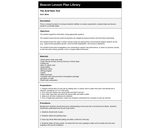
In this lesson, students conduct experiments and compile information into a research paper.

Students participate in a fishbowl discussion about various legal situations related to the "age of responsibility" and contribute their ideas and arguments on the matter to a Learning Network Student Opinion blog post. This resource from the New York Times discusses what standard(s) society should use to determine when a youth should be treated as an adult.

Students will examine changes in African American voting rights throughout North Carolina's history. This lesson begins by reviewing key vocabulary. Students then independently research the history of African American voting rights in North Carolina using a primary source web quest or jigsaw activity.

Students will investigate and discuss problems associated with invasive species. They will then conduct research and prepare a written case study on a specific assigned invasive aquatic species, including information about how it was introduced, impacts associated with its occurrence, and possible control measures.

This lesson introduces students to Oscar Wilde's public persona by studying the articles and images used to advertise his American tour in 1882. Students analyze the ways that these texts both promote and discredit Wilde. Students then conduct research followed by the production of a podcast which compares various images of Wilde.

In this lesson, students will compare/contrast the information in their textbook about Andrew Jackson to political cartoons of the era. Students will identify symbols, allusions and stereotypes used in these cartoons and infer the intended message and tone of the Jackson era cartoons. Students will also identify any biases in the cartoons and check for historical accuracy, and then formulate their own opinion about the Jackson Administration. As a culminating activity, students will write an opinion essay that articulates their personal stance on Andrew Jackson’s character, using proper writing conventions.
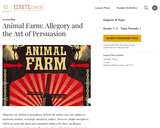
Allegories are similar to metaphors: in both the author uses one subject to represent another, seemingly unrelated, subject. However, unlike metaphors, which are generally short and contained within a few lines, an allegory extends its representation over the course of an entire story, novel, or poem. This lesson plan will introduce students to the concept of allegory by using George Orwell’s widely read novella, Animal Farm, which is available on Project Gutenberg.

In this lesson, students will learn how to annotate sources in order to take close and effective notes.

Students learn about behavioral and biological animal adaptations, watch a video about the Arctic, and research how specific animals have adapted to this harsh environment.

In this lesson, students will complete a final review of the Research Portfolio and writing an Evidence Based Perspective based on the research outcomes for the unit.

A teaching resource for actiities, research assignments, writing prompts and cooperative activities for Ben Franklin including Poor Richard's Almanac.
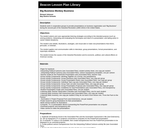
In this lesson, students work in cooperative groups to prepare presentations on business organization and Big Business during the second part of the Industrial Revolution (1860-1910) in the United States.
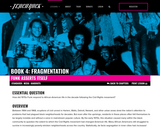
In this lesson, students investigate a collection of musical performances, television interviews, and movie trailers, discussing how black artists of the 1970s, including James Brown, George Clinton, and Curtis Mayfield, addressed black audiences through the music and aesthetics of Funk, casting a light on all that the Civil Rights movement could not do for a racially divided America.

In this set of lessons, students read excerpts from "The Death of Benny Paret" by Norman Mailer and "The Fight" by William Hazlitt. Students annotate the text, specifically looking for metaphor and simile, tone, and syntax. Working with a partner, students write three paragraphs, analyzing metaphor or simile, tone, and syntax in "The Death of Benny Paret." Working independently, students write one paragraph, choosing to analyze metaphor or simile, tone, or syntax in "The Fight."

Students become novice lexicographers as they explore recent new entries to the Oxford English Dictionary (OED), learn the process of writing entries for the OED, and write a new entry themselves. Students will follow up their entry with a persuasive essay and a competition in which the strongest contender for the title of New Word is chosen. Extensions will offer students a chance to evaluate old lists of "new words" and discuss the power dynamics of dictionaries.

This brochure assignment teaches how shifting purposes and audiences can create change in a student’s writing. After exploring published brochures, students determine key questions, research a topic and work through the writing process to create their own informative brochure complete with visuals.
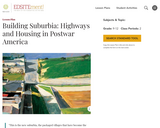
This lesson highlights the changing relationship between the city center and the suburb in the postwar decades, especially in the 1950s. Students will look at the legislation leading up to and including the Federal Highway Act of 1956. They will also examine documents about the history of Levittown, the most famous and most important of the postwar suburban planned developments.